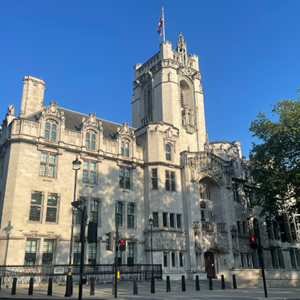
What is the appropriate level of compensation for road traffic accident claims which include overlapping whiplash and other, minor physical injuries? This has been a topic of debate in the insurance industry since the introduction of the Civil Liability Act, and one that we’ve sought clarity on in the Court of Appeal and have now taken to the Supreme Court.
Ahead of the Supreme Court hearing on 20 February, it’s important to reflect on why the Civil Liability Act 2018 was introduced, what it was intended to do, and why a positive judgment by the Supreme Court will help to realise its desired effect.
The Intention and the Reality
With the passing of the Civil Liability Act 2018, the Government sought to create a simplified, fairer compensation system, and to reduce the disproportionately high number and cost of minor, exaggerated and sometimes fraudulent whiplash claims following road traffic accidents. The intention was to reduce the pressure that claims were having on motor premiums, to the benefit of all motorists.
At the heart of those reforms was the introduction of tariffs for whiplash injuries, which reduced the level of damages payable for whiplash claims of up to two years' duration. When the tariffs came into force in May 2021, the casual observer may have been forgiven for thinking ‘problem solved’. Well, unfortunately implementing reform in this area, while usually well-intended, is never quite straightforward. So, what is the issue?
First of all, let’s look at the success. The reforms appear to have helped to reduce the numbers of whiplash claims following road traffic accidents. Ministry of Justice data shows that 386,000 road traffic accident-related personal injury claims were brought between 31 May 2021 and 30 May 2022, the first full year of the whiplash reforms. This was a fall of around 15% from the 2020/21 pre-reform period, albeit given lockdowns and the subsequent changes in driving patterns it is not clear that this reduction is entirely the result of the reforms.[1] While the Act introduced a tariff for whiplash, where there are claims with whiplash and minor additional physical injuries – also known as mixed injuries – we always understood that another overlapping, minor injury was valued by a modest top up to the compensation for whiplash. However, the argument now being run by claimants is that you should value the two injuries entirely separately, which undermines the reductions achieved by the tariff.

These minor injuries – e.g. bruised knees, sprained ankles and sore wrists – are now increasingly being identified on claims notification forms in an attempt to argue for more compensation. Let’s take an example comparing the value of whiplash and non-whiplash injuries. The tariff sets compensation for a whiplash injury of up to three months at £240. Whereas a bruised knee of up to three months, if it were to be valued separately according to judicial guidelines, could attract up to £2,450. Essentially, we’re increasingly moving from being the country that had the weakest necks in Europe to the weakest knees in Europe which, if those driving these claims get their way, risk eroding any benefit from the reforms. In all of this debate, it is vital that the compensation paid for road traffic collision injuries is proportionate to the level of pain and suffering endured.
The Court of Appeal Judgment
Given there was no consensus, it was important for all parties to seek guidance on how the combination of whiplash and other, minor physical injuries should be valued. In January 2023, the Court of Appeal handed down its judgment in two test cases on how to value these mixed injury claims. Its majority decision was that when valuing non-whiplash injuries alongside a whiplash injury covered by the tariff, the correct approach is to:
- assess the tariff amount for the whiplash
- value the non-whiplash injuries in full, and
- then “stand back” to look at the whole, but only make a limited deduction for overlap
It was decided that the deduction can never be more than the tariff amount and so will always be relatively small. The Master of the Rolls disagreed with the majority judgment and supported our position, which was that in valuing the non-whiplash injuries, the effects of the whiplash injury should not be ‘double counted’. However, he was in the minority and therefore the majority view set out in the judgment currently stands.
The Court of Appeal judgment has the effect of bringing injury values back close to pre-whiplash reform levels. It’s also likely to continue to drive up the number of claims involving additional minor physical injuries, and risks pushing more claims over the £5,000 damages threshold for legal costs. This significantly reduces the intended costs benefits of the whiplash reform package, and does not help to reduce pressure on motor premiums.
Seeking Clarity at the Supreme Court

It has been important therefore to test that judgment and, in our view, go back to the proper interpretation of the legislation. In co-ordination with the defendant insurers in the test cases, we sought and received permission from the Supreme Court to appeal the Court of Appeal judgment. The hearing at the Supreme Court will take place on Tuesday 20 February.
Given rising costs in many other areas for motor insurers, such as the increase in the cost of vehicle repairs, this will be an important case. An outcome which reflects the need for fair and proportionate compensation would help realise the original, intended benefits of the reforms and ultimately help hard-pressed, premium paying motorists.
[1] https://assets.publishing.service.gov.uk/media/638625c1d3bf7f7eb2ae56b7/oic-one-year-report.pdf, page 8
